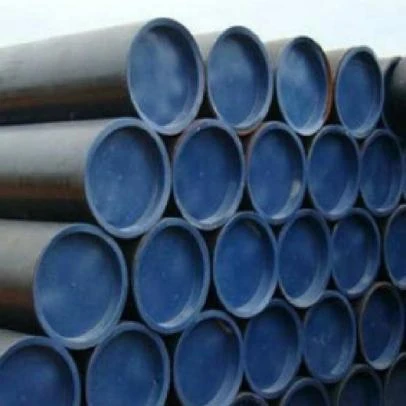-
Cangzhou Yulong Steel Co., Ltd.
-
Phone:
+86 13303177267 -
Email:
admin@ylsteelfittings.com
- English
- Arabic
- Italian
- Spanish
- Portuguese
- German
- kazakh
- Persian
- Greek
- French
- Russian
- Polish
- Thai
- Indonesian
- Vietnamese
- Zulu
- Korean
- Uzbek
- Hindi
- Serbian
- Malay
- Ukrainian
- Gujarati
- Haitian Creole
- hausa
- hawaiian
- Hebrew
- Miao
- Hungarian
- Icelandic
- igbo
- irish
- Japanese
- Javanese
- Kannada
- Khmer
- Rwandese
- Afrikaans
- Albanian
- Amharic
- Armenian
- Azerbaijani
- Basque
- Belarusian
- Bengali
- Bosnian
- Bulgarian
- Catalan
- Cebuano
- China
- China (Taiwan)
- Corsican
- Croatian
- Czech
- Danish
- Esperanto
- Estonian
- Finnish
- Frisian
- Galician
- Georgian
- Kurdish
- Kyrgyz
- Lao
- Latin
- Latvian
- Lithuanian
- Luxembourgish
- Macedonian
- Malgashi
- Malayalam
- Maltese
- Maori
- Marathi
- Mongolian
- Myanmar
- Nepali
- Norwegian
- Norwegian
- Occitan
- Pashto
- Dutch
- Punjabi
- Romanian
- Samoan
- Scottish Gaelic
- Sesotho
- Shona
- Sindhi
- Sinhala
- Slovak
- Slovenian
- Somali
- Sundanese
- Swahili
- Swedish
- Tagalog
- Tajik
- Tamil
- Tatar
- Telugu
- Turkish
- Turkmen
- Urdu
- Uighur
- Welsh
- Bantu
- Yiddish
- Yoruba

Dec . 06, 2024 06:03 Back to list
Different Types of Flange Gaskets for Enhanced Sealing Solutions and Applications
Understanding Flange Gasket Types A Comprehensive Guide
Flange gaskets are essential components in piping systems, used to create a seal between two flanges to prevent leakage of fluids or gases. The choice of the right flange gasket type is critical for ensuring system integrity, safety, and efficiency. In this article, we will explore various types of flange gaskets, their materials, applications, and factors to consider when selecting the appropriate gasket for your needs.
1. Types of Flange Gaskets
Flange gaskets can be broadly classified into several types based on their materials and design
- Flat Gaskets These are the most common types of gaskets and are used in a variety of applications. Made of materials like rubber, cork, or paper, flat gaskets are typically employed in low-pressure environments.
- O-Ring Gaskets O-rings are circular gaskets that provide a tight seal when compressed between two surfaces. They are often made from elastomers and are widely used in hydraulic and pneumatic systems.
- Spiral-Wound Gaskets These gaskets consist of a combination of metal and filler materials wound together in a spiral shape. They are particularly effective in high-temperature and high-pressure environments due to their sturdy construction and flexibility.
- Kammprofile Gaskets These gaskets have a metal core with a soft facing material on both sides. They are used in applications that require high sealing performance in a compact design.
- Composite Gaskets Made from a combination of materials, composite gaskets offer good resistance to temperature and pressure variations. They are used in challenging environments where standard materials might fail.
- Rubber Gaskets Rubber gaskets are flexible and provide an excellent seal against a range of fluids. They are often used in plumbing and HVAC applications.
2. Material Considerations
The material of the gasket is crucial for its performance in various applications
. Common materials used for flange gaskets includeflange gasket gasket types

- PTFE (Polytetrafluoroethylene) Known for its chemical resistance, PTFE gaskets are ideal for corrosive environments. They can withstand varying temperatures and are commonly used in pharmaceuticals and food processing.
- Graphite Graphite gaskets can handle high temperatures and pressures, making them suitable for industrial applications. They also have self-lubricating properties that help in maintaining a good seal.
- Rubber Synthetic rubber gaskets are widely used due to their flexibility and resistance to water and oils. They are suitable for low-pressure applications.
- Metal Metal gaskets are preferred for high-pressure applications. They provide durability and are capable of sealing even in extreme conditions.
3. Factors to Consider When Selecting Gaskets
When choosing a flange gasket, several factors must be considered
- Pressure and Temperature Consider the operating conditions of your system. High-pressure and high-temperature applications will require more robust gasket materials like spiral-wound or metal gaskets.
- Chemical Compatibility Ensure that the gasket material is compatible with the fluids or gases it will come into contact with to avoid degradation.
- Flange Design The type and condition of the flanges being used will also affect gasket selection. Different flange designs may necessitate specific gasket types for optimum sealing.
- Installation Method Some gaskets require precise installation techniques to ensure a proper seal. Understanding the installation requirements of your gasket type is crucial.
4. Conclusion
Selecting the right flange gasket is essential for the efficiency and safety of your piping system. With a variety of types and materials available, understanding your application's specific requirements will guide you to make an informed choice. Consider factors such as pressure, temperature, chemical compatibility, and flange design to ensure optimal performance and longevity of your gaskets. By investing in the right gasket, you can prevent leaks, reduce maintenance costs, and enhance the overall reliability of your system.
Latest news
-
ANSI 150P SS304 SO FLANGE
NewsFeb.14,2025
-
ASTM A333GR6 STEEL PIPE
NewsJan.20,2025
-
ANSI B16.5 WELDING NECK FLANGE
NewsJan.15,2026
-
ANSI B16.5 SLIP-ON FLANGE
NewsApr.19,2024
-
SABS 1123 FLANGE
NewsJan.15,2025
-
DIN86044 PLATE FLANGE
NewsApr.19,2024
-
DIN2527 BLIND FLANGE
NewsApr.12,2024
-
JIS B2311 Butt-Welding Fittings LR/SR 45°/90° /180°Seamless/Weld
NewsApr.23,2024











